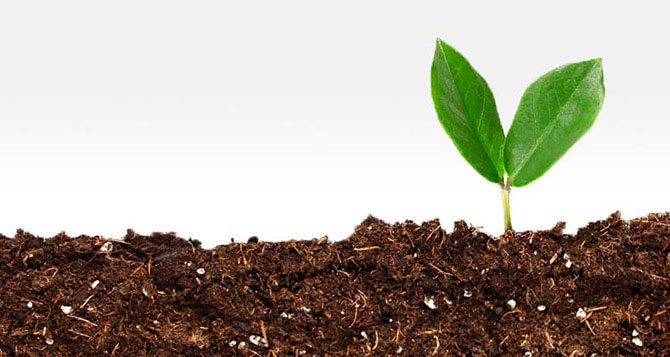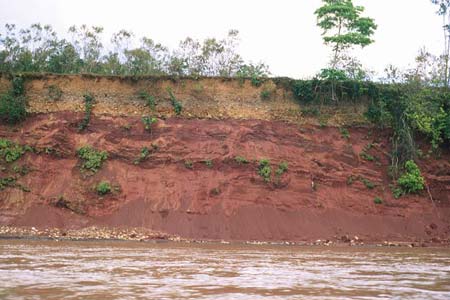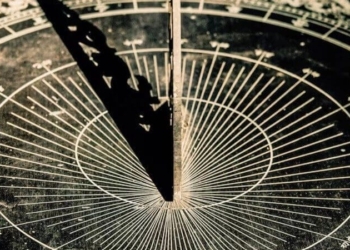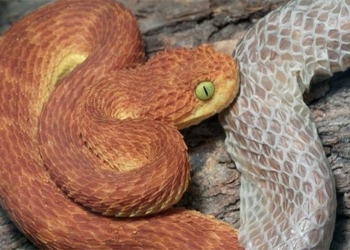From space, Earth appears green and blue, but up close, you mostly see brown. … but is that a good explanation for the color choices of the universe?
According to ScienceABC, most soil is brown (though not all) because of carbon left behind by microorganisms.

Most soil is brown due to carbon left behind by microorganisms.
Most people dislike getting dirty, even loathing it, especially when mud stains clothes or tracks into the house. However, few stop to think for a moment about what mud actually is. Mud is not a specific substance; it is usually a mixture of clay, sand, rocks, and organic compounds. Of these, the most important part, at least in terms of color, is the organic matter.
Depending on where you live in the world, the composition of soil will have its own characteristics. In fact, you can identify the origin of most soil simply by examining a representative soil sample and the ratio of its components.
In most places where humans reside, we interact with dirt, water, and plants. In areas where everything grows and thrives well, people tend to settle there. However, there are also areas where everything gradually dies. Plants and animals are life forms that rely on carbon, and when they die, they begin to decompose and break down.
Tiny bacteria on Earth break down these plant remnants using specialized enzymes (which break the bonds in leaves and stems) to create tasty morsels suitable for their size. These hungry microorganisms process a large amount of carbon in the soil, even incorporating some elements into their cells.
And because they are so busy, bacteria cannot complete their work fully. “They are not 100 percent efficient grinding machines,” says Steven Allison, an ecologist at the University of California, Irvine.

Soil profile along the Manu River, Peru, has a slightly yellow and red color due to minerals, while the thin surface layer is brown due to the presence of organic carbon. (Photo: LiveScience)
“There are pieces of carbon that are not consumed by bacteria, and there is carbon in their own bodies. When they die, the carbon returns to the earth. It’s a cycle, where there is always leftover carbon. These small pieces accumulate over time.”
They are referred to as humus, building up year after year. It is this accumulated carbon from bacteria that gives Earth its dirty brown color, as carbon absorbs most colors in the solar spectrum, reflecting back only brown light.
However, not all soil around the Earth is brown. Some deserts seem to consist only of white sand. The soil in Hawaii, rich in iron, has a slightly reddish hue. Digging down in some areas of dirty brown soil, you will find other colors beneath.
“If there weren’t so much carbon in the ground, the earth would be yellow, red, and gray. These colors depend on the dominant minerals present there,” Allison says.



















































